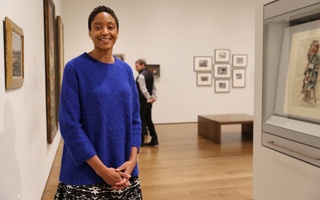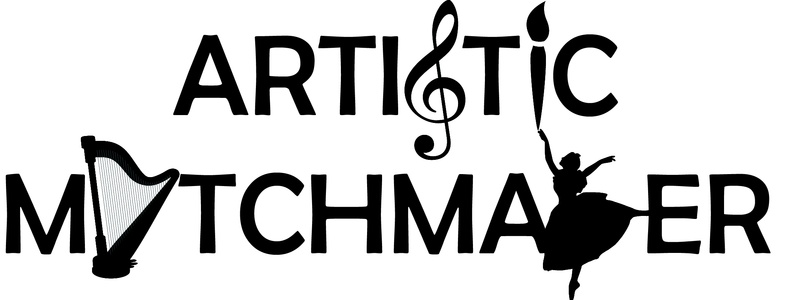The artists:
- Jordan H. Hayashi ’16, joint concentrator in Music and Computer Science in Winthrop House; multidisciplinary artist with experience in photography, videography, audio engineering, and DJing.
- Laila M. Smith ’17, joint concentrator in Social Studies and Studies of Women, Gender, and Sexuality in Cabot House, enrolled in the Harvard/NEC dual degree program for jazz performance; currently studying abroad in Amsterdam.
Unlike some of his contemporaries, famed British composer Thomas Adès is an impassioned believer in art for art’s sake, eschewing any ethical or political considerations in his work. He claims that philosophical logic taints the purity of musical logic, and for this reason he despises composers such as Richard Wagner, who was openly anti-Semitic and whose music became one of the cornerstones of German culture under the Nazi regime. In an interview with music journalist Tom Service, Adès elaborates: “In Wagner every note is political and that to me is repulsive. Ethics are a distraction an artist cannot afford.”
The perspectives of photographer Jordan H. Hayashi ’16 and jazz vocalist and composer Laila Smith ’17 propose a challenge to Adès’s mode of thinking. Although “art for art’s sake” certainly does exist, art can also be as practical as it is abstract, as social and political as it is aesthetic. The examination of Jordan’s and Laila’s attitudes toward their respective crafts suggests that art is in fact an industry of the message: grounded in reality with the purpose of addressing, projecting, and transforming socio-cultural conventions.
Since the mid-20th century, social commentary has been a fundamental element of the American artistic tradition. Laila’s own artistic outlook resounds with social criticism, with a focus on the representation of young women in mainstream pop culture. She explains that many female pop stars today seem to be constructed around the brand of “the unattainable sex goddess,” which she sees as “damaging to young women as a whole” and which she yearns to refute through her music. “All I want to do is represent a multidimensional young female who critically thinks about the world,” she asserts.
Aside from a call for political action, art has also demonstrated its role in advertisements that can influence consumers’ emotions and decisions. As a photographer for both CS50 and Harvard College Admissions, Jordan fully embraces this notion of art as advertisement and artist as persuasive storyteller. While the work of many amateur photographers today embodies the notion of the snapshot, a photograph taken spontaneously and without artistic or journalistic intent, these snapshots are “not really what photographers strive for,” says Jordan. “The best pictures all tell a story. Especially for Harvard Admissions, you need to tell a story in each photo about how Harvard is the place you want to be.”
Jordan’s recent photography shows an interest not only in telling a single individual’s story but also in syncing the pulse of that story with a larger, collective narrative. In this vein, Jordan cites photographing Ghungroo 2015 as one of his most memorable and challenging projects under the Harvard Admissions umbrella. The challenge arose from his desire to capture the energy of a packed Agassiz Theater in a photo that included only the onstage performers. “The performance and the energy were driven not just by the dancers but also by the people watching them,” Jordan explains. “It’s really hard to show that sort of audience involvement in a photo that doesn’t include the audience in the frame.” Nonetheless, he stepped up to the challenge with confidence, in part because “people were really into the dancing and were having a great time. It made my job easier.” By conveying the spirit of the larger Harvard community through capturing a single production such as Ghungroo, Jordan continually aims to use photography not solely for “photography’s sake,” but rather as an effective means of promoting and endorsing the Harvard experience.
Capturing Laila’s socio-artistic platform through photography would offer a similar challenge to that which Jordan faces regularly in his work: How does one use a single frame to communicate the alignment of an individual voice with a larger, intangible message? Music photography is particularly challenging in this respect, in that it makes only a musician’s physical presence, rather than the sounds he or she produces, the centerpiece of the artistic feat at hand. The act of photographing musicians hence raises the question of whether it is justifiable to isolate these visual elements and to deem those elements in themselves a valid representation of a musician’s identity. For example, there is often debate about whether a band that is otherwise only mediocre deserves to be famous because of its members’ good looks. In Laila’s eyes, this deliberate segregation of visual and auditory components is disparaging for all involved, dividing the artist’s character into falsely discrete components while robbing the audience of the opportunity for a more wholesome artistic experience. “When we consume celebrity, I’m not convinced that we can compartmentalize what we internalize,” she explains. In addition to combating gender stereotypes, Laila hopes to use her music to encourage a move away from stratifying art and toward appreciating art more holistically and hence “becoming more mindful consumers.”
However, music photography has the potential to operate in alliance with this stance of anti-compartmentalization, as long as it aims to supplement and complete, rather than replace, its subjects’ already-existing identities. The activist undertones in Laila’s music could find strength in visual as well as musical representation; photographs could perhaps freeze more stirring moments in performance and amplify Laila’s underlying social message without nullifying the music itself. Such artistic collaboration could hence be as much a vehicle for instigating impactful social transformation as it is a means of heightening possibilities for self-expression. Although ethics and politics do complicate the creative process, they also give art a sense of direction, multidimensionality, and agency that is valuable to creator and audience alike.
Read more in Arts
Facebook as Memoir: Identity & Self-Archivalism TodayRecommended Articles
-
SpotlightTo Ghia Zaatari ’07, Harvard isn’t quite home. Rather, according to the native of Beirut, Lebanon, Harvard is a “studio,”
-
What We've Done With the Great Gray SpaceDid the rise of the Internet forever change the way music is shared? Are we closer to artists or in danger of losing the essence of music? Michael L. McGlathery examines Kanye, Bowie, and more in his new look at the “gray spaces” of the music industry.
-
"The Nine" Features An Invisible AmericaPhotographer Katy Grannan premiere's her first feature film, "The Nine," at the Carpenter Center for Visual Arts.
-
 The Harvard Arts Museums Welcome Makeda Best
The Harvard Arts Museums Welcome Makeda Best -
 Harvard Prof. Sarah Lewis Takes Over New Yorker Photo Instagram
Harvard Prof. Sarah Lewis Takes Over New Yorker Photo Instagram














